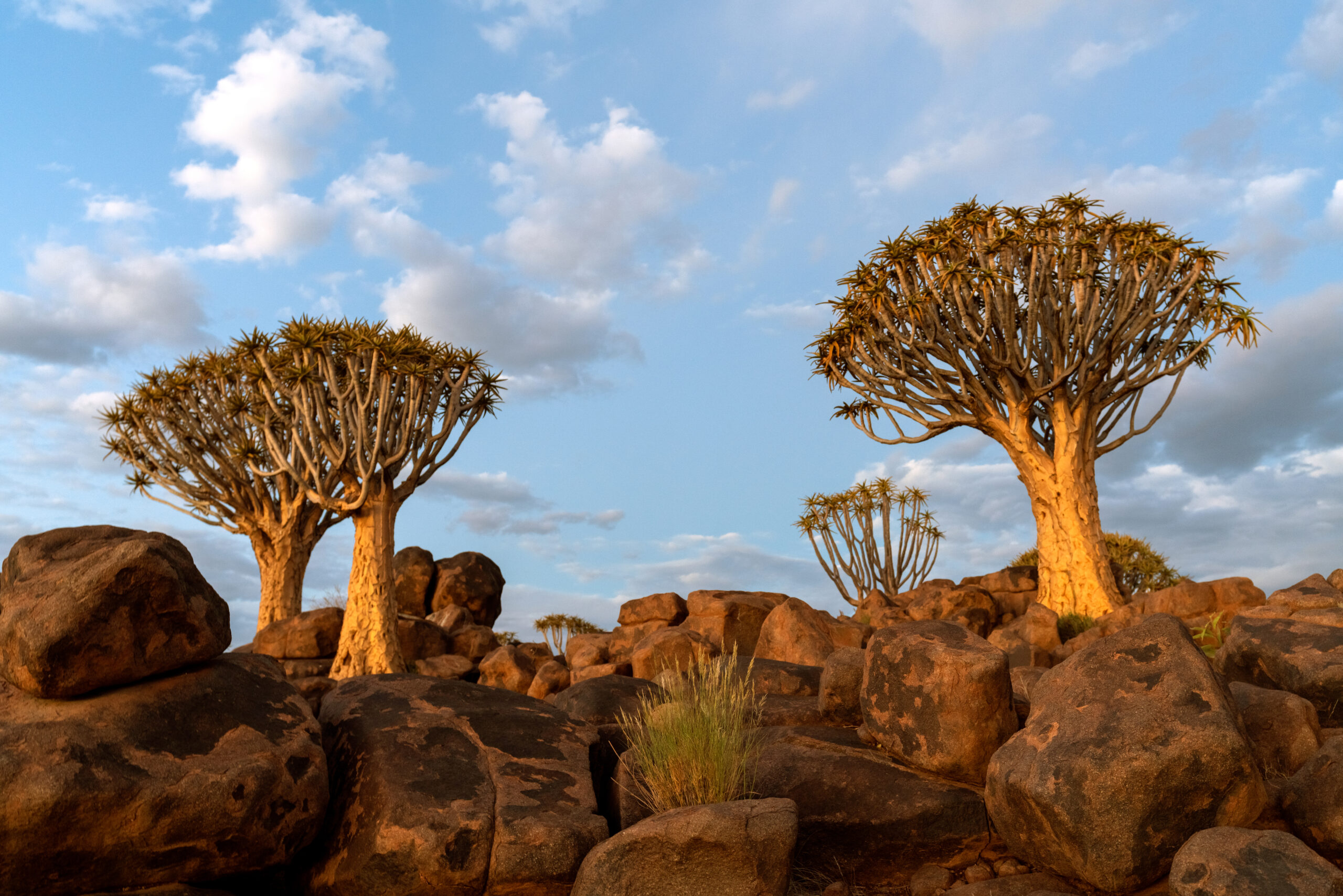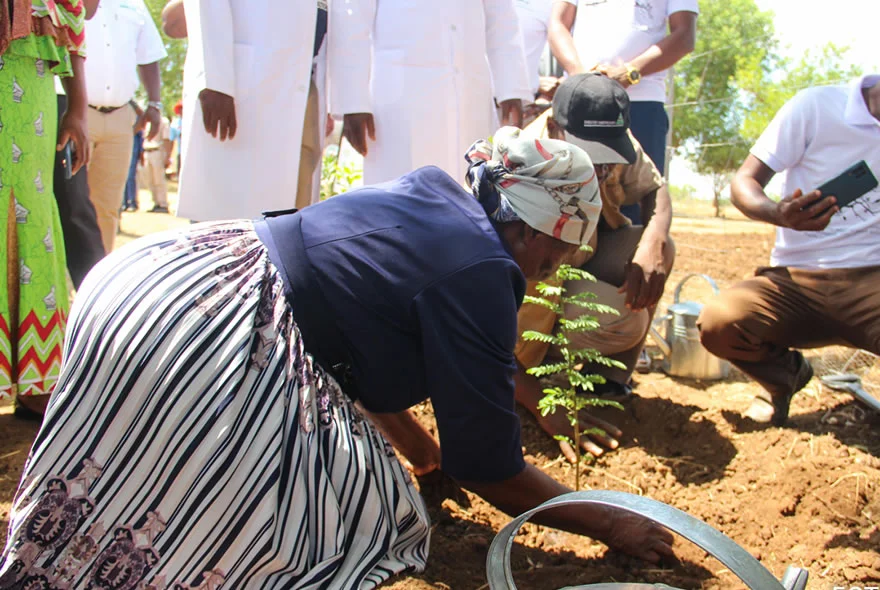In the heart of Southern Africa, Zimbabwe stands as a testament to resilience and transformation. Once plagued by deforestation and environmental degradation, the nation is now experiencing a remarkable re-greening revolution. From dust to forest, the inspiring tales of local communities, dedicated conservationists, and innovative projects are reshaping the landscape and rekindling hope. As vast stretches of barren land give way to lush greenery, these stories illuminate not just environmental recovery but also the tenacity of the human spirit. Join us as we explore the enchanting journey of reforestation in Zimbabwe, celebrating the individuals and initiatives breathing life back into their homeland. Discover how, through collective action and unwavering determination, Zimbabwe is reclaiming its natural heritage and setting a powerful example for the world.
The Importance of Re-Greening for the Environment
Re-greening efforts are crucial for the environment, especially in regions like Zimbabwe that have faced severe deforestation. Forests play an essential role in maintaining ecological balance by providing habitat to diverse wildlife, regulating the climate, and preventing soil erosion. The loss of these green spaces can lead to adverse effects such as increased carbon dioxide levels, loss of biodiversity, and disruption of water cycles. Therefore, re-greening is not just about planting trees but also about restoring the health of the entire ecosystem.
The process of re-greening helps in combating climate change by sequestering carbon dioxide from the atmosphere. Trees absorb carbon dioxide during photosynthesis, which helps in mitigating the greenhouse effect. Moreover, forests act as natural water filters, maintaining the quality of water bodies and ensuring a steady supply of clean water. This is particularly important for communities dependent on natural water sources for their daily needs.
In addition to environmental benefits, re-greening efforts also have socio-economic advantages. Forests provide resources such as timber, fruits, and medicinal plants, which are vital for the livelihoods of local communities. By restoring forests, these communities can achieve sustainable development and improve their quality of life. Re-greening initiatives also create job opportunities in areas such as tree planting, forest management, and eco-tourism, contributing to economic growth.
Historical Context: Deforestation in Zimbabwe
Zimbabwe's history of deforestation dates back to the colonial era when large tracts of forest land were cleared for agricultural expansion and urban development. The demand for agricultural land led to the conversion of forests into farmlands, causing significant loss of tree cover. Moreover, the exploitation of timber for commercial purposes further exacerbated the problem, leading to widespread deforestation.
In the post-independence period, the situation did not improve as rapidly growing population and economic challenges put additional pressure on the remaining forests. The need for firewood as a primary energy source for rural communities contributed to further deforestation. Additionally, illegal logging and uncontrolled grazing by livestock hindered the natural regeneration of forests, leaving vast areas barren and degraded.
By the late 20th century, the environmental degradation had reached alarming levels, prompting a nationwide concern. The loss of forests had severe consequences on wildlife habitats, leading to the decline of various species. Soil erosion became rampant, affecting agricultural productivity and food security. Recognizing the gravity of the situation, the government, along with local communities and international organizations, began to initiate re-greening efforts to reverse the damage and restore the ecological balance.
Community-Led Initiatives in Re-Greening
Community-led initiatives have been at the forefront of Zimbabwe's re-greening revolution. Local communities, recognizing the importance of forests for their survival and well-being, have taken proactive steps to restore their natural heritage. One such initiative is the establishment of community woodlots, where villagers collectively plant and manage trees on communal land.
These woodlots serve multiple purposes, providing firewood, fodder, and building materials, while also acting as carbon sinks. In addition to woodlots, agroforestry practices have gained popularity among farmers. By integrating trees into agricultural landscapes, farmers can enhance soil fertility, protect crops from wind damage, and increase biodiversity. This approach not only boosts agricultural productivity but also promotes environmental sustainability.
Women, in particular, have played a significant role in these community-led efforts. In many villages, women's groups have been instrumental in organizing tree planting campaigns and raising awareness about the importance of re-greening. These groups often collaborate with schools and local authorities to ensure the success of their initiatives. By involving different segments of the community, these efforts foster a sense of ownership and responsibility towards the environment.
Success Stories: Transformative Projects and Their Impact
One of the most inspiring success stories in Zimbabwe's re-greening revolution is the Nyanga Pine Reforestation Project. Located in the Eastern Highlands, this project has transformed degraded land into lush pine forests. The initiative, spearheaded by local communities with support from the government and NGOs, has planted millions of pine trees over the past two decades. The reforested area now provides a sustainable source of timber and has created numerous employment opportunities for the local population.
Another remarkable example is the Mafungautsi State Forest, which has undergone a significant transformation thanks to the collaborative efforts of local communities and conservationists. Once severely degraded, the forest is now thriving with diverse flora and fauna. Community members have been actively involved in forest management, patrolling the area to prevent illegal logging and setting up nurseries to grow indigenous tree species. The success of this project has not only restored the forest but also improved the livelihoods of the people living in the surrounding areas.
The "Trees for Tomorrow" initiative, launched by a group of young environmentalists, is yet another testament to the power of collective action. This project focuses on planting indigenous trees in urban areas, schools, and public spaces. Through educational campaigns and tree-planting events, the initiative has engaged thousands of volunteers, particularly young people, in re-greening efforts. The impact of this project is visible in the increased green cover and enhanced environmental awareness among the urban population.
Government Policies Supporting Re-Greening Efforts
The Zimbabwean government has played a pivotal role in supporting re-greening efforts through various policies and programs. Recognizing the need for a coordinated approach, the government has formulated national strategies for forest conservation and sustainable land management. These policies aim to address the root causes of deforestation and promote reforestation initiatives across the country.
One of the key policies is the National Forest Policy, which provides a comprehensive framework for forest management. The policy emphasizes community participation, sustainable utilization of forest resources, and the protection of biodiversity. It also outlines measures to combat illegal logging and promote reforestation. By involving local communities in decision-making processes, the policy ensures that re-greening efforts are inclusive and sustainable.
In addition to national policies, the government has launched several programs to support re-greening initiatives. The "Green Zimbabwe" program, for instance, focuses on tree planting, environmental education, and capacity building. Through partnerships with local authorities, NGOs, and international organizations, the program has successfully mobilized resources and expertise for re-greening projects. These efforts have resulted in the planting of millions of trees and the restoration of degraded landscapes across the country.
The Role of NGOs and International Organizations
Non-governmental organizations (NGOs) and international organizations have been instrumental in advancing Zimbabwe's re-greening revolution. These entities bring in technical expertise, financial resources, and global experience, which are crucial for the success of reforestation projects. They work in collaboration with local communities and the government to implement sustainable re-greening initiatives.
One such organization is the Environmental Management Agency (EMA), which plays a key role in coordinating re-greening efforts at the national level. EMA provides technical support, conducts research, and facilitates community engagement in reforestation projects. Their initiatives focus on promoting sustainable land management practices, restoring degraded ecosystems, and enhancing environmental education.
International organizations such as the United Nations Development Programme (UNDP) and the World Wildlife Fund (WWF) have also made significant contributions to Zimbabwe's re-greening efforts. These organizations provide funding, technical assistance, and policy support for various projects. For example, the UNDP's Sustainable Forest Management project aims to enhance the capacity of local communities to manage forest resources sustainably. By leveraging their global networks, these organizations help to scale up successful re-greening initiatives and replicate them in other regions.
Challenges Faced in Re-Greening Efforts
Despite the remarkable progress, re-greening efforts in Zimbabwe face several challenges. One of the primary obstacles is the lack of adequate funding. Reforestation projects require significant financial resources for activities such as tree planting, maintenance, and community engagement. Limited funding can hinder the scale and sustainability of these initiatives, making it difficult to achieve long-term goals.
Another challenge is the impact of climate change, which poses a threat to re-greening efforts. Increasing temperatures, changing rainfall patterns, and extreme weather events can affect the survival and growth of newly planted trees. Drought, in particular, can lead to high mortality rates among young saplings, reducing the overall effectiveness of reforestation projects. Addressing these challenges requires adaptive strategies and resilient tree species that can withstand climate variability.
Furthermore, socio-economic factors such as poverty and land tenure issues also pose challenges to re-greening efforts. Many rural communities rely on forest resources for their livelihoods, leading to unsustainable practices such as illegal logging and overgrazing. Ensuring that re-greening initiatives are economically viable and provide alternative livelihood options is crucial for their success. Additionally, resolving land tenure conflicts and securing land rights for local communities can enhance their participation and commitment to reforestation projects.
How Individuals Can Contribute to Re-Greening
Individuals play a crucial role in supporting re-greening efforts and can contribute in various ways. One of the most effective actions is participating in tree-planting campaigns. By joining local initiatives or organizing community events, individuals can help increase green cover and restore degraded areas. Being actively involved in such activities fosters a sense of responsibility towards the environment and encourages others to do the same.
Another way individuals can contribute is by adopting sustainable practices in their daily lives. Simple actions such as reducing paper usage, conserving water, and minimizing waste can have a significant impact on the environment. Supporting eco-friendly products and businesses also promotes sustainable practices and reduces the demand for resources that contribute to deforestation. By making conscious choices, individuals can contribute to the overall goal of environmental conservation.
Additionally, raising awareness about the importance of re-greening and advocating for policy changes can amplify the impact of individual efforts. Engaging with local authorities, participating in environmental campaigns, and using social media platforms to spread information are effective ways to create a broader movement for reforestation. By being informed and proactive, individuals can influence public opinion and drive positive change at the community and national levels.
Conclusion: The Future of Zimbabwe's Forests and Sustainability
The re-greening revolution in Zimbabwe is a powerful testament to the resilience and determination of its people. From community-led initiatives to government policies and international support, the collective efforts have transformed vast stretches of barren land into thriving forests. These inspiring tales of reforestation not only highlight the environmental benefits but also underscore the socio-economic advantages for local communities.
As Zimbabwe continues on its path of re-greening, it is essential to address the challenges and ensure the sustainability of these efforts. Adequate funding, adaptive strategies to combat climate change, and addressing socio-economic factors are crucial for the long-term success of reforestation projects. By involving local communities, fostering partnerships, and promoting sustainable practices, Zimbabwe can achieve its vision of a green and sustainable future.
The journey from dust to forest in Zimbabwe serves as a beacon of hope and inspiration for the world. It demonstrates that with collective action and unwavering determination, it is possible to restore degraded landscapes and reclaim natural heritage. As we celebrate these achievements, let us also commit to supporting and replicating such efforts globally, ensuring a greener and more sustainable planet for future generations.
Related Posts
Zimbabwe is blessed with a rich diversity of indigenous tree species that have adapted over centuries to the country’s
A Greener Zimbabwe Through Collaboration In a world facing mounting environmental challenges, tree planting in Zimbabwe is emerging as
Imagine a single tree, standing tall in the heart of a bustling community. Its roots extend deep into the



